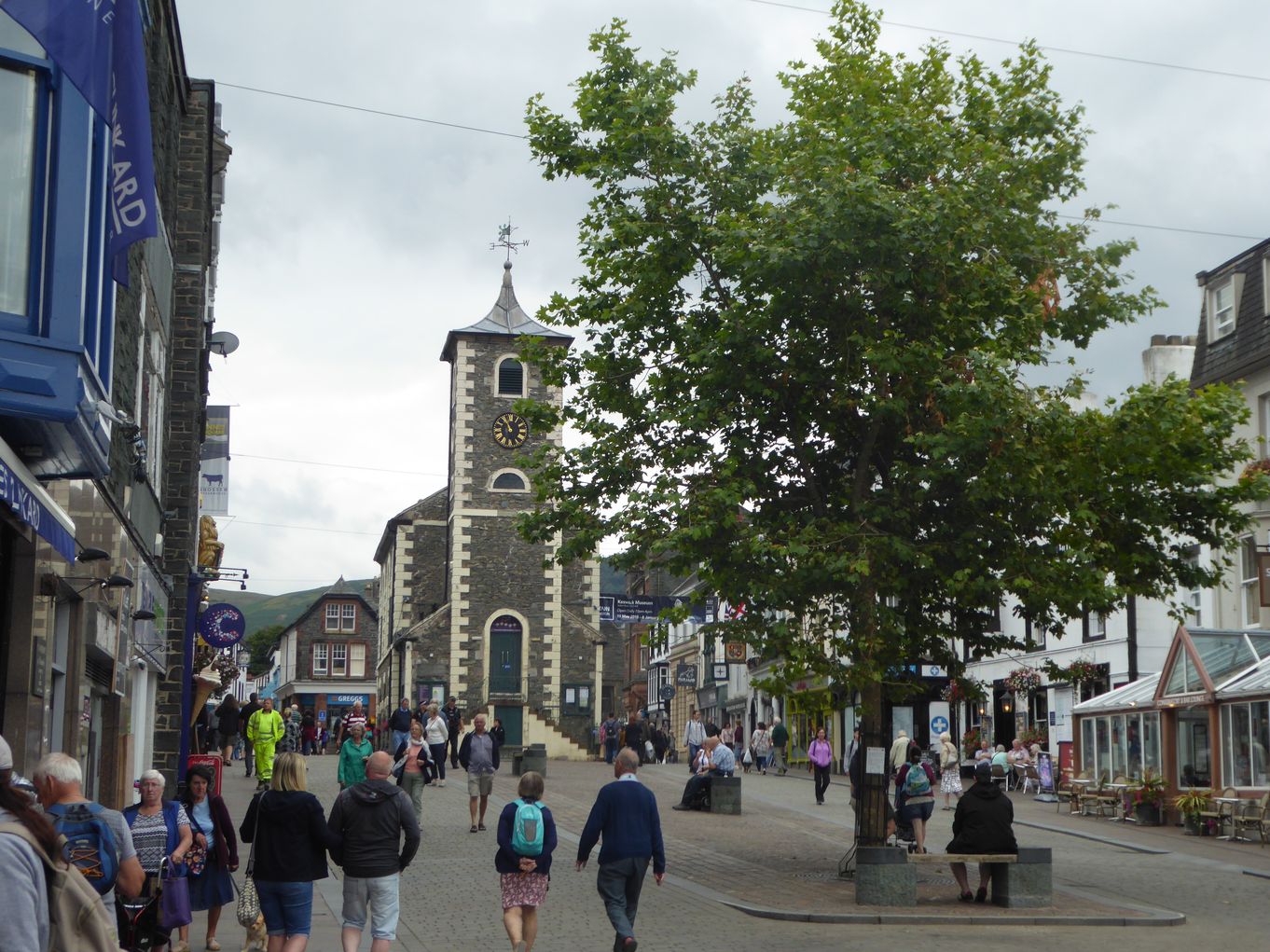Keswick’s 500 Million Year Heritage
The character of the buildings in Keswick and the landscapes around the town reflect not only the human history of the area over the past few thousand years but also its geological history that extends over nearly five hundred million years. As you walk around the town you are surrounded by volcanic rocks. The green Lakeland slates are volcanic ashes that fell from eruption clouds into lakes about 450 million years ago. The red-brown pavement slabs in Market Square and some surrounding streets were imported from northern Italy. They too have a volcanic origin being deposited from hot (around 1000o C) dense ground-hugging clouds of volcanic debris. The red sandstones that are seen in many windowsills, door jambs and lintels were deposited in desert sand dunes 280 million years ago when Britain was situated at the same latitude as the Sahara Desert is today.
Walk to Latrigg or Walla Crag above the town for wonderful views of landscapes that reveal more glimpses into the past. The contrasting shapes of the fells to the north and west of Keswick, and those to the south, reflect the different types of the rocks beneath them. The smooth slopes of the fells to the north and west of the town are underlain by Skiddaw Group rocks. These were deposited on a deep-sea floor as muds and fine-grained sands between 480 and 460 million years ago. Later these sediments were altered to slates and sandstones when they were buried beneath the younger units and then caught up in a major mountain building episode that culminated about 400 million years ago. Back then the Lake District was part of a mountain chain comparable in scale to the Alps today. The harder, erosion resistant, volcanic rocks of the Borrowdale Volcanic Group underlie the more rugged Central Fells to the south of Keswick. This volcanic episode occurred between 460 and 450 million years ago and includes some of the largest eruptions known to science anywhere in the world.
Most people are aware that the Ice Age has left its mark on the landscapes around Keswick. Twenty thousand years ago large glaciers flowed along Borrowdale towards Keswick, eastwards and northeastwards along the Newlands valley and eastwards along the Greta valley. These glaciers merged and flowed northwestwards across what is now Bassenthwaite lake. The town 2 is built on a series of low rounded and elongate hills composed of glacial debris that was sculpted beneath fast flowing ice.
Market Square and Moot Hall
Building stones and some paved areas in Keswick tell volcanic stories. The characteristic Lakeland green slate walls and roofs are 450 million year old volcanic ashes from Borrowdale. The red-brown setts and paving slabs in Market Square are volcanic rocks imported from northern Italy. They were deposited from extremely hot dense ground-hugging clouds formed by violent eruptions.
Download pdf - An Introduction to the Geological Features of Keswick
Looking South from Latrigg across Keswick and Derwentwater
Twenty thousand years ago this view would have looked very different. Glaciers would have occupied all the valleys between the fells and have flowed up Borrowdale and Derwentwater towards Keswick. The low elongate hills on which the town is built were sculpted at the base of fast flowing ice. 450 million years ago the area experienced volcanic mayhem with the eruption of lava flows and violent volcanic explosions forming volcanic clouds that were tens of kilometres high.

With thanks to the Skiddaw U3A Geology Group for providing this information for our website.

